Babylonian Pigpen,Babylonian PigPen Light Obbligato,The Lumia Company |
"The first time I saw a full psychedelic Light Show was in the summer of 1967 at The Ambassador Theatre in Washington, DC. It was fantastic! From the time I was in elementary school, I had always been the kid who would be given the task of running film or slide projectors so I had an innate grasp of the technical aspects. I started doing impromptu light shows for my friends. We'd be at a party at someone's house, and just turn off the lights and start creating At this time I would use a single slide projector with abstract coloured 35mm slides to reflect off of a small pad of mirrors that I could hold in my hands and control the motion with the music (imagine taking the small square mirrors off of a mirrored ball and gluing them onto a foam rubber pad). I began to develop techniques which allowed me to visually interpret the music with a surprisingly high degree of control. It was like playing along with the music in light and colour. But it was just something I would do for fun, to entertain friends. However, some of the basic techniques that I developed were a precursor to the more sophisticated visuals that I was later able to achieve with laser scanning."In high school I attended St. Stephens college preparatory school. I grew tired of the types of bands that were being hired for our school dances, and to remedy the situation I joined the student organisation that selected bands – it was actually called The Hop Committee!
After deciding on the band, the next question was how to decorate for this dance. I brought My confident nature won out, and we started planning. From the science department I got two overhead projectors – one for liquids and one for large Op-Art transparencies that could be moved by hand with the music. I also got four 35mm slide projectors and one 16mm movie projector. Since we were steeped in the prevailing anti-Establishment politics that prevailed during those turbulent times, I chose a tongue-in-cheek name for our light show, namely The Babylonian Pigpen. This weird name was inspired by a book by a radical black leader Eldridge Cleaver, titled Soul On Ice, where he described Washington DC as 'the pigpen of Babylon'. Thus The Babylonian Pigpen Light Show was born! The actual show with December's Children was a big success. People were amazed with what we had done. The band members came back and asked us to perform with them at upcoming gigs. One of the students at the show put me in touch with his older brother who promoted dances at a local church that featured bands like The Fallen Angels. So the work started flowing. We started doing shows, first with projectors that we would rent from local audio-visual companies and then with our own equipment which we would purchase with the meagre proceeds (I think we were getting $50-60 a night). In '68 we were asked to do a church dance with The Fallen Angels. At first I flatly refused, saying that our Light Show just wasn't up to the level of their music. I always tried to have the
Jack handed me his business card and told me about a gig that they were playing for an anti-war rally in downtown DC and to give the event organiser a call about doing a Light Show with The Fallen Angels. WOW! As you might imagine, I was elated!"We changed our name to The Babylonian PigPen Light Obbligato to distinguish our shows from the run-of-the-mill psychedelic light shows that were cropping up all over. And we began performing a lot of shows with The Fallen Angels at local concerts and dances. We used to work up special imagery just for their shows, like
creating custom slides to introduce each band member. And of course, we had a special 'feel' for their music so This was a great time, and it lasted up until the Fall of '69 when all of us in The Babylonian Pigpen headed off in different directions to start college. Coincidently, The Fallen Angels were to break up soon thereafter. I came back to town
I had really wanted to book The Fallen Angels, but since they weren't available, I picked the next best band. In '72 I performed a live Llight Show at The Smithsonian Institute as part of an 'Expanded Cinema' programme. The show was quite advanced in its use of quadraphonic sound – mixing between recordings and a live performance by Jack Bryant.
However, since we were performing almost every night, Jack's songs were played from tape for those shows.
"The Fallen Angels were an example of just how creative contemporaries of mine could be. They were from the same neighbourhood, so to speak. Seeing them create and perform really empowered me to follow my own creative vision of expressing music with light." Doug McCullough - 2012(Original Article - Let There Be Light by Alistair C Mitchell - August 2nd 2012) |
Interview reproduced from Shindig! No.28 with kind permission from Jon 'Mojo' Mills - February 2021.Grab yourself a subscription to this amazing magazine from here: |
In 1972 Doug formed The Lumia Company which merged 'old' lighting technologies and modern Lasers. In 1977 Audio Visual Imagineering was founded and went on to become a major player in Laser Lighting with Laser Show Design, Inc. |
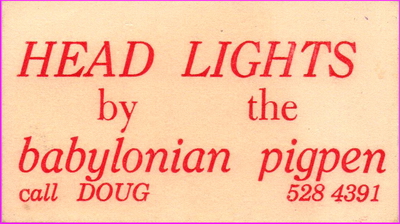 |
Babylonian Pigpen Card |
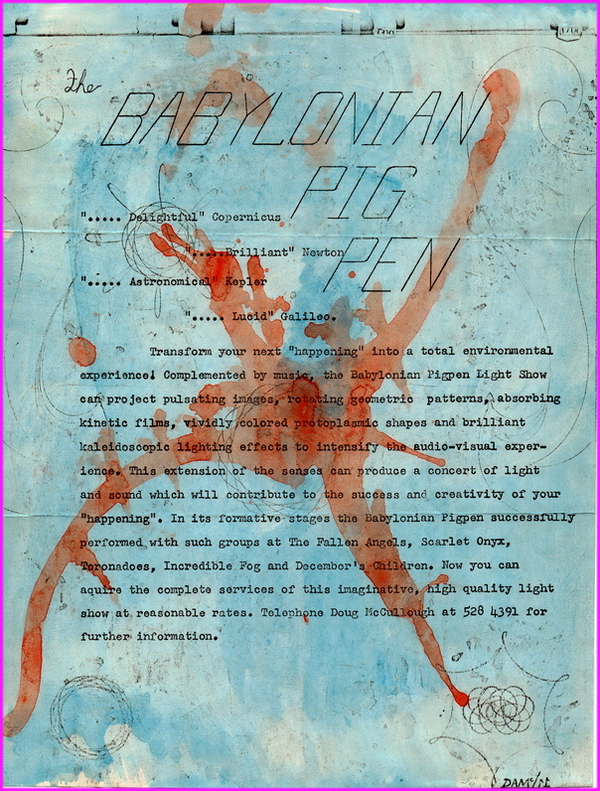 |
Babylonian Pigpen Flyer |
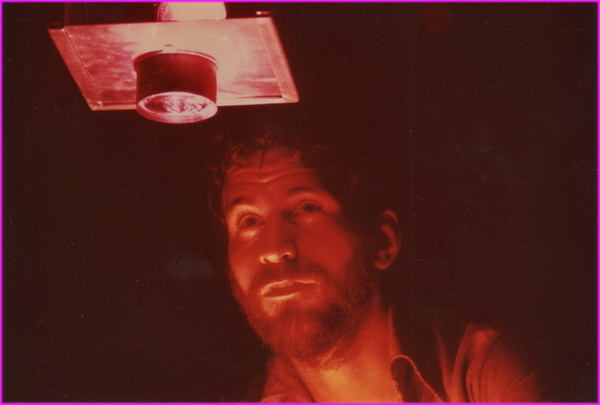 |
Doug McCullough |
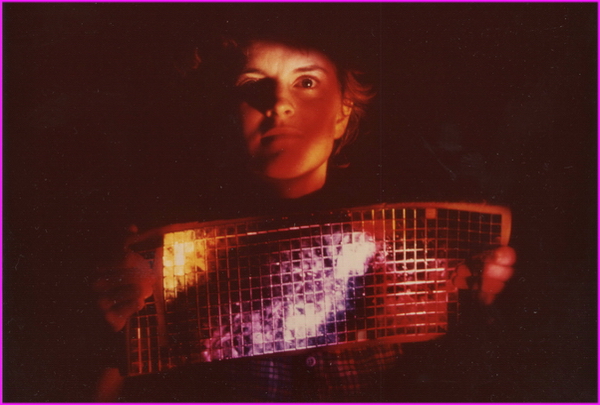 |
Penny with Reflectives |
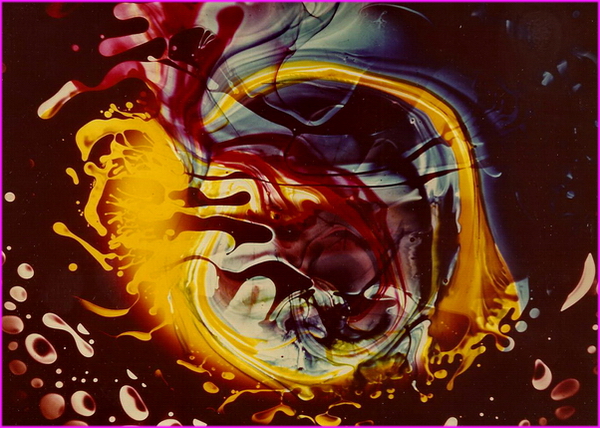 |
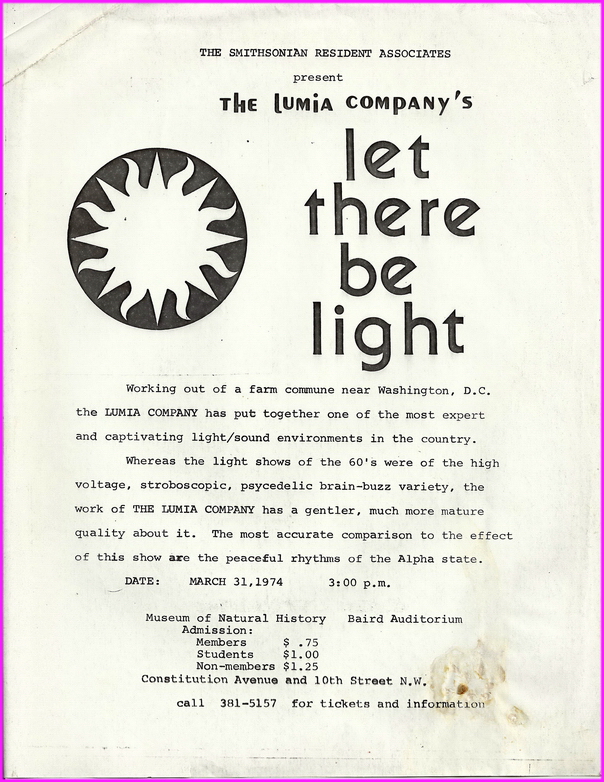 |
Smithosian Flyer for Let There Be Light |
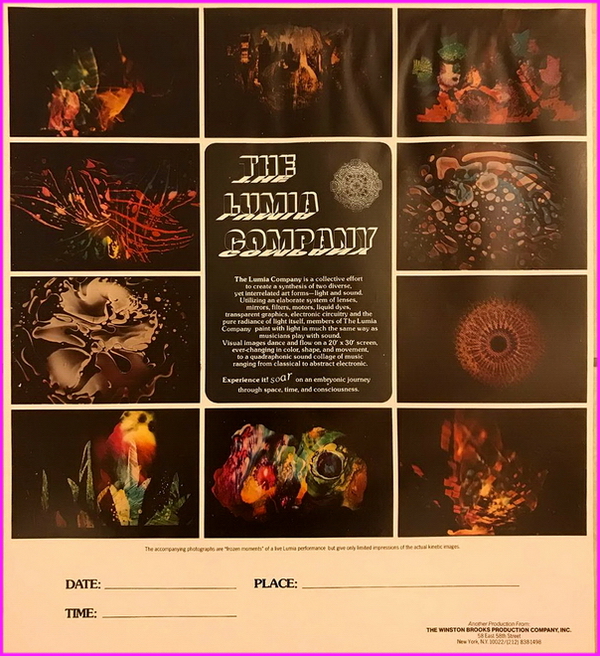 |
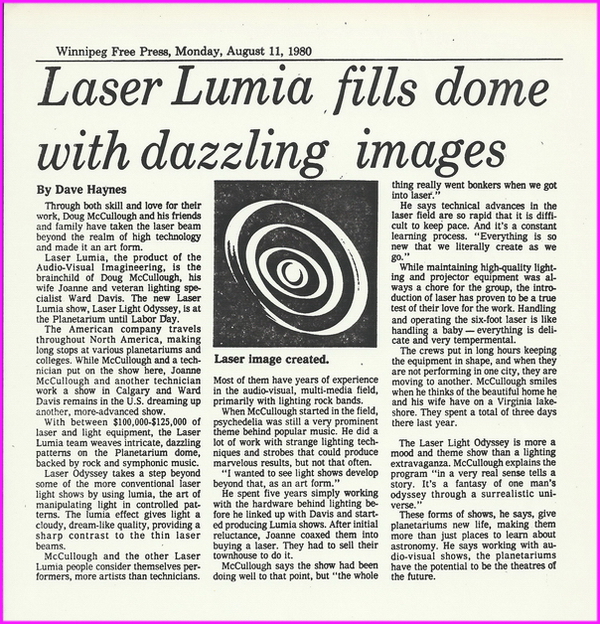 |
Laser Lumia 1980 |
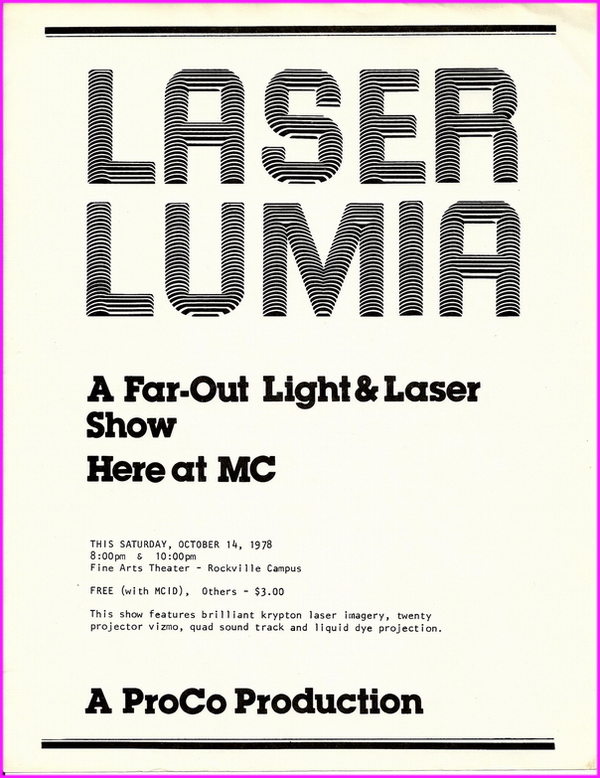 |
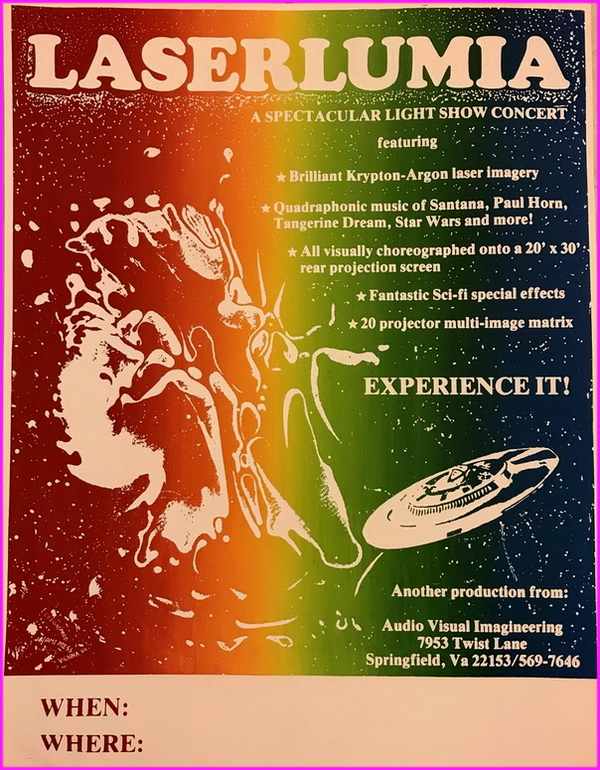 |
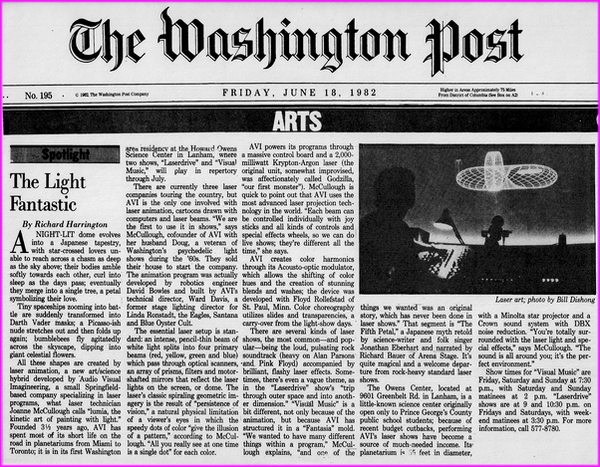 |
Audio Visual Imagineering 1982 |
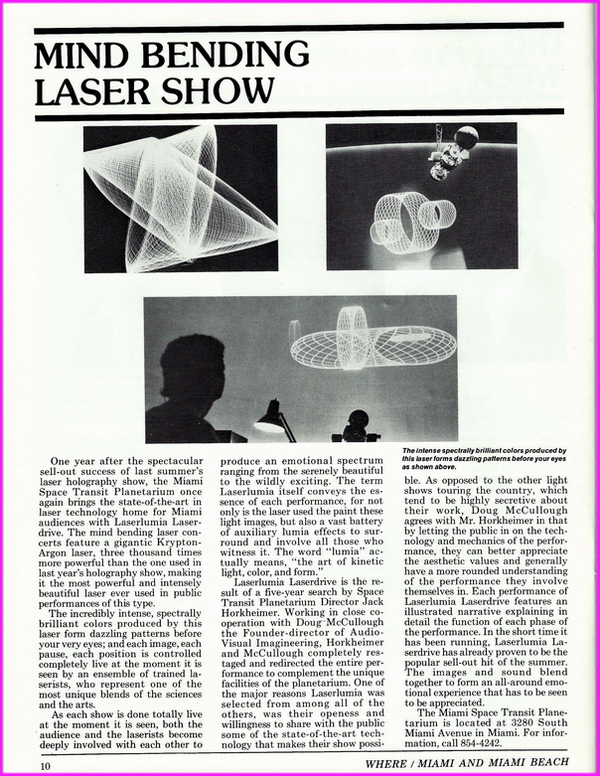 |
Audio Visual Imagineering |
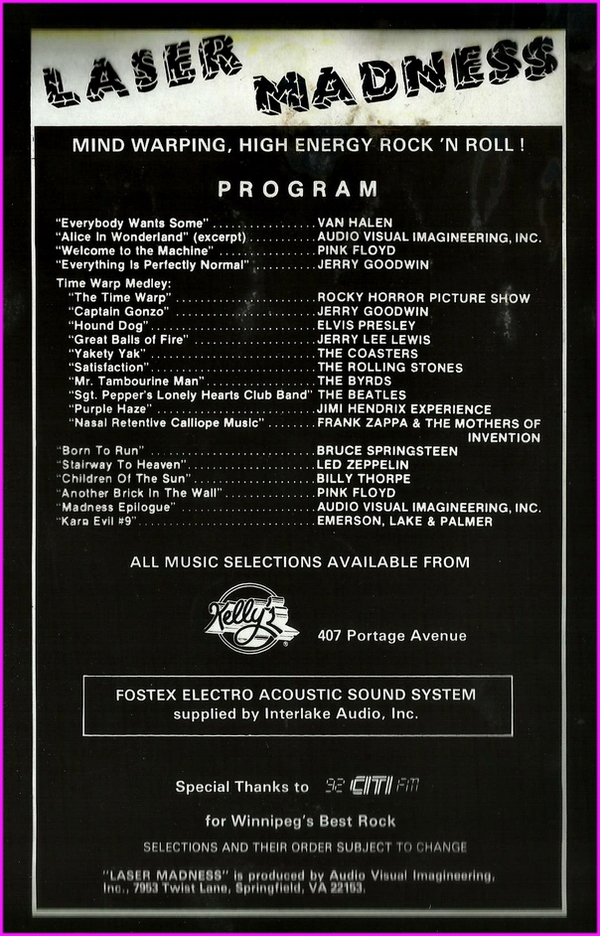 |
Audio Visual Imagineering |
